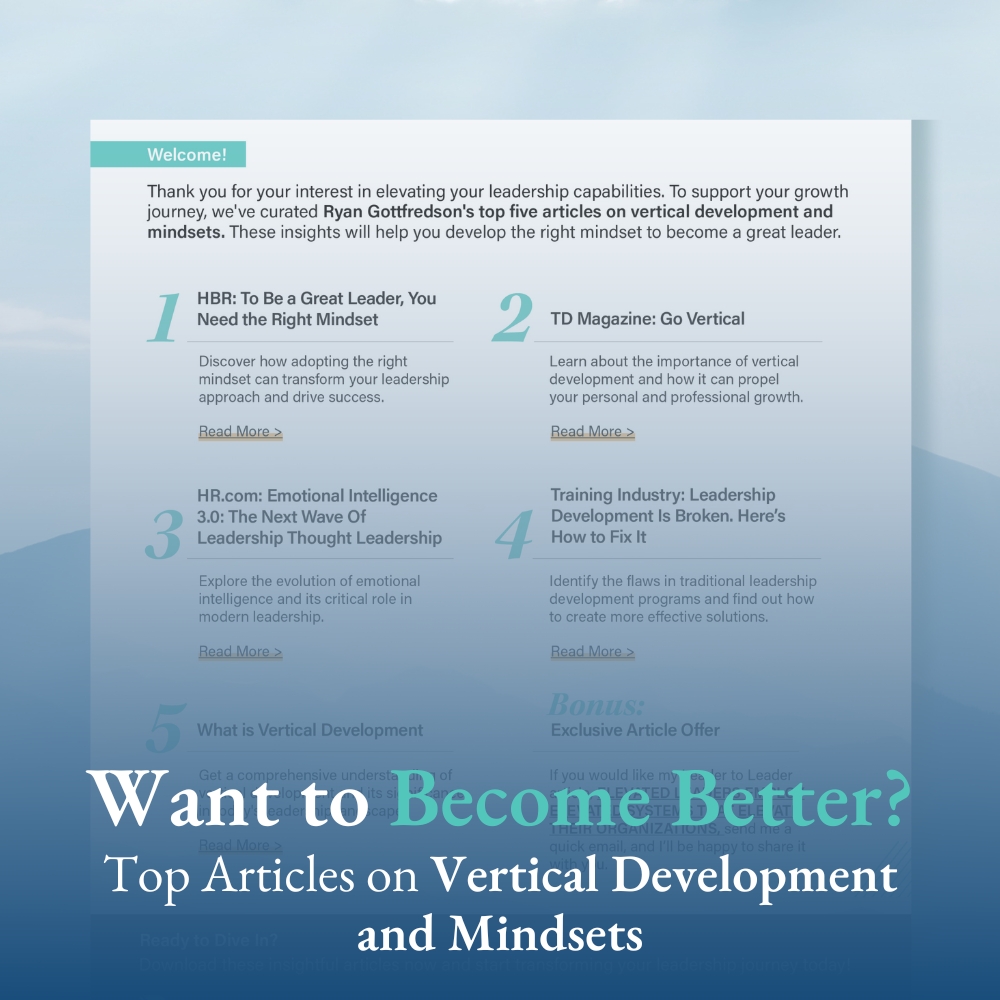In a prior post, I wrote about how leaders commonly see themselves as the hero, but all too often, they are actually the villain.
I recently heard a great example of this. A couple weeks ago, I presented a workshop at a leadership development conference with a group of 70 bankers.
I had just finished going over the four sets of mindsets that influence our effectiveness as a leader. To summarize, I had just communicated how leaders need to:
-
See challenges as opportunities (growth mindset) instead of as things to avoid (fixed mindset)
-
Create a psychologically safe work environment by being open to others’ ideas (open mindset) instead of stifling the voices of others by being closed to their ideas (closed mindset)
-
Be focused on winning (promotion mindset) instead of on avoiding losing and problems (prevention mindset)
-
See others as people and value them as such (outward mindset) instead of seeing ourselves as being more important than others, causing us to see others as object (inward mindset)
Then, I let the attendees discuss these ideas at their tables.

Wanting to listen in to some conversations, I sat at a table where all of those seated were from the same bank, and they summarized what was going on in their bank.
While the bank has traditionally had a strong leadership culture, the CEO of this bank had recently been operating in a way where he felt he was being the hero, but in reality he was being seen as the villain.
They went on to explain the following:
About a year prior, the bank was sitting at $350 million under assets. Through a full-scale strategic planning effort and with support of employees, the CEO promised its shareholders that they would grow to $500 million under assets. Shortly thereafter, and way ahead of schedule, the bank hit the $500 million mark.
This was a big win! But, the CEO then got a little ambitious and without the support of his employees, he promised shareholders that they could get to $750 million in a relatively short time frame. Since then, the bank has actually back-tracked and is currently under the original goal of $500 million.
Now, the CEO is really feeling some heat, and is likely scared that the bank isn’t going to be able to live up to the promises that he made.
Thus, his chief concern is overwhelmingly the size of the bank’s assets under management. With this as his primary focus, he has begun sending pressure down the organizational chart. Essentially, the CEO is trying to wring every drop possible out of his leaders, managers, and employees, believing that if they can only work harder and more efficiently, they can hit their goals.
Feeling this heat, the emerging leaders sitting at this table told me that they feel like the CEO is (1) not leaving any space for them to make mistake, stifling any attempts to be creative and innovative (prevention mindset); (2) closed to the ideas and suggestions of employees (closed mindset); and (3) seeing them as cogs in his wheel (inward mindset). And it is likely that the CEO is taking this hard-handed approach because he doesn’t believe that his employees can change and be agile (fixed mindset).

Let’s pause here for a moment. Here is a bank that essentially trying to double its assets under management in a short period of time. How do you think that is going to happen? Is that going to happen by operating the same way they have been, just harder and more efficiently, like the CEO thinks?
Unlikely.
The only way the bank is going to hit its goals is by being creative and innovative, thinking outside the box; exploring new ideas, likely making mistakes and learning along the way; and helping its employee to be energized and creative.
Creating this type of a culture requires essentially the opposite approach the CEO is taking. But, because he eyes are so focused on the outcomes, he can’t see that. Further, he can’t see that if he wants to reach his goal, he needs to focus on what drives a creative, agile, and advancing culture: promotion mindsets, open mindsets, outward mindsets, and growth mindsets.
For those who read my prior post about “working the angles,” this probably sounds familiar.
What we are left with is a CEO that sees himself as the hero, but is actually being the villain.

Moral of the Story
This story reiterated to me that if we want to move forward and upward, whether individually or as an organization, it requires that we focus on and develop positive mindsets. When we focus on and develop positive mindsets, the progress toward our goals and destination becomes natural and relatively painless.
If we fail to give mindsets their due, our primary attempts to move forward and upward will be unnatural, forceful, and contrived; and the prevailing mindsets will continually resist the pressure to change, grow, and improve.
If you want to help leaders in your organization awaken to the importance of mindsets and even their own mindsets, I would love to help. Either email me at ryan@ryangottfredson.com, or check out an example of how I often work with top leadership teams.










